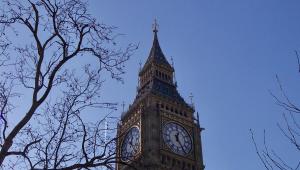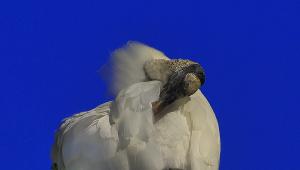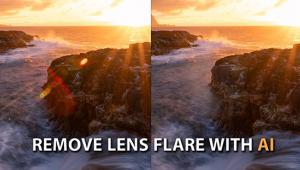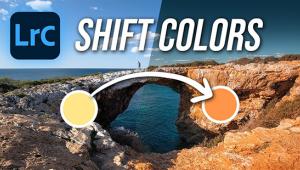Making A Spectacle Of Themselves; Unique Lenses For M-Series Leicas Page 2
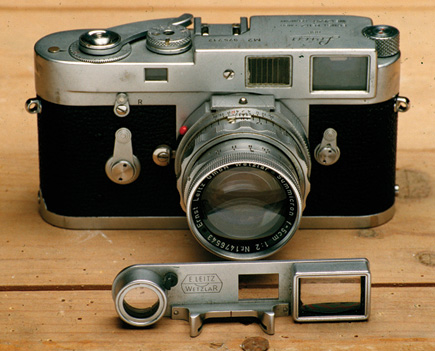 |
|
|
This time, the answer lies in the close-focusing ability of rangefinder lenses.
Few 50mm lenses focus much closer than about one meter, or 40". It makes
the rangefinder coupling more difficult (though not insurmountable) but what
really makes life interesting is the difference between the field of view of
the lens and the field of view of the viewfinder. This is not just a question
of parallax--the separation between the lens and the viewfinder--but
also of the reduction in the field of view as the lens focuses closer.
Hey, presto! Spectacles! These allow the rangefinder and viewfinder to work
down to about half the usual viewing distance: in fact, in the range from 90cm
(35") to 50cm (19"). There's a no-focus gap between one meter
and 90cm, but at the closest focusing distance, you are down to about 1/7 life
size instead of about 1/17. It's still not exactly macro, but it can be
very useful. Unlike the "spectacles" versions of the 35mm and 135mm
lenses, where the "spectacles" are fixed, the "spectacles"
on a 50mm f/2 "spectacles" or close-focusing Summicron are removable,
and are added only for close focusing, when they are clipped on to the top of
the lens like high-precision pince-nez spectacles.
Once again, "spectacles" added significantly to the price: about
25 percent, this time. "Spectacles" Summicrons are significantly
less common than non-"spectacles" versions, but equally, they are
far from rare.
Understandably, the spectacles sometimes get lost, which is why you occasionally
see advertisements for "50mm close-focusing Summicron, no spectacles."
The lens is still perfectly usable in the normal range: it just looks a bit
lonely, and it doesn't feel quite right. When I say "feel,"
I don't mean the tactile sensation: I mean something much more abstract,
the sort of feeling you get when a picture isn't hanging straight on a
wall.
Values (or at least prices) are very difficult to give. Among the 35mm lenses,
"spectacles" versions should logically command either more or less
money than their non-bespectacled cousins, depending on whether the photographer
needs them or not. Personally, I'd pay less for a 35mm "spectacles"
lens than for a non-"spectacles" version--not least because
I couldn't use the "spectacles" lens on my Voigtländers.
 |
|
|
But of course, we are talking about Leica collectors here, which means we
are not talking about wholly rational people (I know; I used to collect Leicas).
Summiluxes (f/1.4) which are relatively rarely encountered in "spectacles"
form, tend to go for more of a premium as compared with their non-"spectacles"
sistren, so look in the $1000-$2000 region.
A Summicron (f/2) should be around 1/2 or at most 2/3 the price of a Summilux,
and a Summaron (f/3.5 or f/2.8), 1/2 to 2/3 the price of a Summicron. Everything
depends on condition: a mint, boxed lens might be worth two or three times as
much as a decent "user" lens, and that in turn might be worth twice
as much as a really rough, ugly lens.
The 135mm f/2.8, recently discontinued, likewise covers an immense range: anything
from $300 or so for a good "user" to $1000 or more for one that
is mint and boxed.
A 50mm f/2 "spectacles" Summicron generally goes at a modest premium
compared with a contemporary non-spectacles version: a maximum of about $450
provided it has its spectacles. Without them, it is generally worth rather less
than a non-spectacles lens--despite being every bit as usable. So if you
want a Summicron to use, look for one of these!
- Log in or register to post comments



